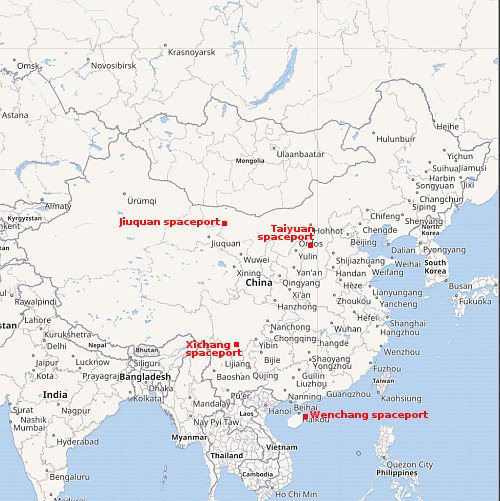China yesterday completed two launches
China yesterday successfully completed two launches using different rockets from two different spaceports in the country’s interior.
First, its Long March 3C rocket launched a classified technology test satellite, the rocket lifting off from its Xichang spaceport in southwest China. No real information about the satellite was released, though its name, Shiyan, is part of a series of satellites that tests new designs for communications and remote sensing.
Next, the pseudo-company Galactic Energy placed three satellites into orbit, its solid-fueled Ceres-1 rocket lifting off from the Jiuquan spaeport in northwest China. Once again, little information was released about the satellites’ purpose.
With each launch, China’s state-run press also provided no information about where the lowers stages of both rockets landed inside China. This is especially of concern for the Long March 3C, which uses very toxic hypergolic fuels that can dissolve the skin.
The leaders in the 2025 launch race:
113 SpaceX
50 China
12 Rocket Lab
11 Russia
SpaceX still leads the rest of the world in successful launches, 113 to 87.
These numbers should change again by the end of today, with both SpaceX and China planning an additional launch each.
China yesterday successfully completed two launches using different rockets from two different spaceports in the country’s interior.
First, its Long March 3C rocket launched a classified technology test satellite, the rocket lifting off from its Xichang spaceport in southwest China. No real information about the satellite was released, though its name, Shiyan, is part of a series of satellites that tests new designs for communications and remote sensing.
Next, the pseudo-company Galactic Energy placed three satellites into orbit, its solid-fueled Ceres-1 rocket lifting off from the Jiuquan spaeport in northwest China. Once again, little information was released about the satellites’ purpose.
With each launch, China’s state-run press also provided no information about where the lowers stages of both rockets landed inside China. This is especially of concern for the Long March 3C, which uses very toxic hypergolic fuels that can dissolve the skin.
The leaders in the 2025 launch race:
113 SpaceX
50 China
12 Rocket Lab
11 Russia
SpaceX still leads the rest of the world in successful launches, 113 to 87.
These numbers should change again by the end of today, with both SpaceX and China planning an additional launch each.


